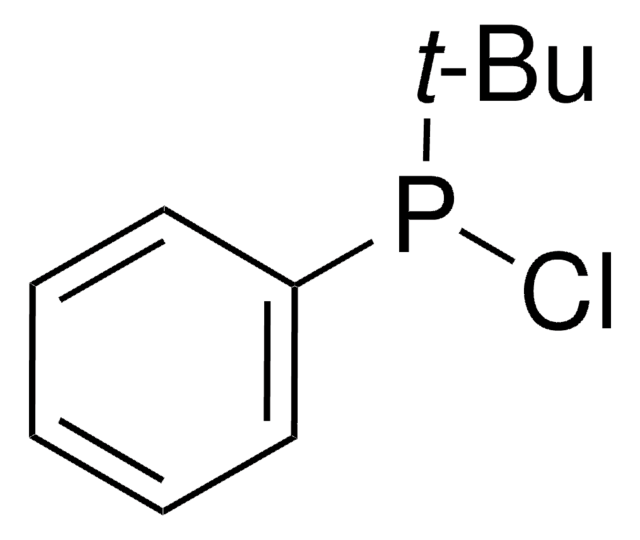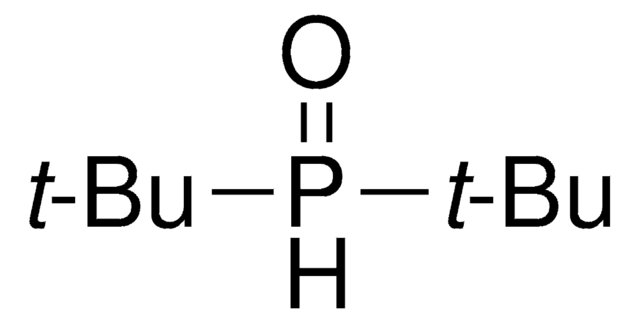674389
Phenylphosphine
ca. 10% weight in hexanes
About This Item
Produits recommandés
Densité de vapeur
3.79 (vs air)
Pression de vapeur
760 mmHg ( 160 °C)
Capacité de réaction
reaction type: Buchwald-Hartwig Cross Coupling Reaction
reaction type: Heck Reaction
reaction type: Hiyama Coupling
reaction type: Negishi Coupling
reaction type: Sonogashira Coupling
reaction type: Stille Coupling
reaction type: Suzuki-Miyaura Coupling
Pertinence de la réaction
reagent type: catalyst
reagent type: ligand
Indice de réfraction
n20/D 1.578 (lit.)
Point d'ébullition
160 °C (lit.)
Densité
0.6912 g/mL at 25 °C
1.001 g/mL at 25 °C (lit.)
Groupe fonctionnel
phosphine
Température de stockage
−20°C
Chaîne SMILES
Pc1ccccc1
InChI
1S/C6H7P/c7-6-4-2-1-3-5-6/h1-5H,7H2
Clé InChI
RPGWZZNNEUHDAQ-UHFFFAOYSA-N
Vous recherchez des produits similaires ? Visite Guide de comparaison des produits
Catégories apparentées
Mention d'avertissement
Danger
Mentions de danger
Conseils de prudence
Classification des risques
Acute Tox. 4 Oral - Aquatic Chronic 2 - Asp. Tox. 1 - Eye Irrit. 2 - Flam. Liq. 2 - Repr. 2 - Skin Irrit. 2 - STOT SE 3
Organes cibles
Central nervous system
Code de la classe de stockage
3 - Flammable liquids
Classe de danger pour l'eau (WGK)
WGK 3
Point d'éclair (°F)
-14.8 °F - closed cup
Point d'éclair (°C)
-26 °C - closed cup
Certificats d'analyse (COA)
Recherchez un Certificats d'analyse (COA) en saisissant le numéro de lot du produit. Les numéros de lot figurent sur l'étiquette du produit après les mots "Lot" ou "Batch".
Déjà en possession de ce produit ?
Retrouvez la documentation relative aux produits que vous avez récemment achetés dans la Bibliothèque de documents.
Notre équipe de scientifiques dispose d'une expérience dans tous les secteurs de la recherche, notamment en sciences de la vie, science des matériaux, synthèse chimique, chromatographie, analyse et dans de nombreux autres domaines..
Contacter notre Service technique












